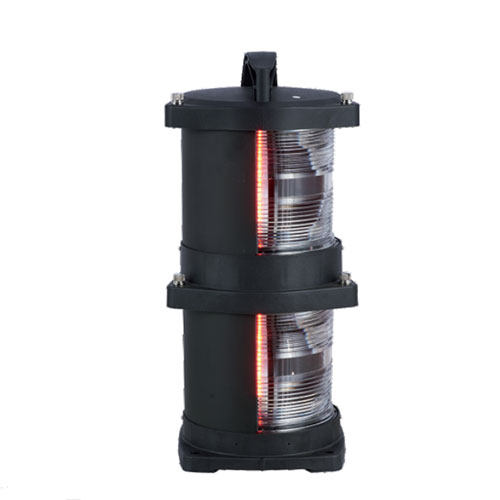What are Standards and Regulations Governing Marine Navigation Lighting
In the vast expanses of our oceans, navigation lighting stands as the silent sentinel of maritime safety, guiding ships through darkness and ensuring smooth passage. Yet, the effectiveness of this lighting hinges crucially on adherence to regulations and compliance with international standards. In this article, we delve into the pivotal significance of regulations governing navigation lighting, explore the primary standards vessels must adhere to, and shed light on the implications of compliance for maritime operations worldwide.

The Vital Role of Navigation Lighting Regulations
Navigation lighting regulations form the bedrock of maritime safety, offering clear directives on the types, colors, and placements of lights necessary for vessels traversing the seas. These regulations are indispensable for instilling order amidst the maritime bustle, mitigating collision risks, and safeguarding the lives of seafarers. Compliance with these regulations transcends mere legal obligation—it is a moral imperative, ensuring the safety and security of all who voyage our oceans.
Key Standards and Regulations Steering Navigation Lighting
International Regulations for Preventing Collisions at Sea (COLREGs):
Established by the International Maritime Organization (IMO), the COLREGs serve as primary international regulations governing navigation lighting.
They delineate the types, colors, and placements of lights requisite for vessels of varying sizes and types to signal their status, directional movement, and relative positions to other vessels.
Additionally, the COLREGs delineate visibility arcs for navigation lights and stipulate requisites for special lights used by specific vessels like fishing vessels, towing vessels, and pilot vessels.
International Association of Marine Aids to Navigation and Lighthouse Authorities (IALA) Standards:
IALA standards complement the COLREGs by furnishing detailed specifications for the design, performance, and upkeep of navigation lights, alongside other navigation aids like buoys and beacons.
These standards ensure that navigation lights are conspicuous, recognizable, and efficacious in guiding vessels safely through waterways, harbors, and channels.
National and Regional Regulations:
Many nations and regions augment international standards with additional regulations tailored to address distinct navigational challenges and local conditions.
Such regulations might mandate supplementary navigation lights, such as those for vessels navigating inland waterways, rivers, or confined waters.
International Maritime Organization (IMO) Resolutions:
Periodic adoption of resolutions and guidelines by the IMO addresses navigation lighting and other safety measures, tackling emerging issues and technological advancements.
These resolutions furnish guidance on implementing navigation lighting regulations, as well as recommendations for enhancing safety standards and practices in maritime operations.
Classification Society Rules:
Classification societies like Lloyd’s Register, DNV GL, and Bureau Veritas formulate rules and standards for ships' construction, equipment, and operation.
These rules often encompass requirements for marine navigation lighting systems, encompassing design, installation, and testing to ensure adherence to international regulations and industry best practices.
Implications of Regulations and Compliance in Navigation Lighting
Compliance with navigation lighting regulations carries profound implications, transcending mere legal obligations to significantly impact maritime safety, operational efficiency, legal liability, and stakeholders' overall reputation.
Safety at Sea:
Compliance enhances safety at sea by ensuring vessels remain visible, particularly during low visibility conditions or night navigation, thereby mitigating collision risks.
Effective compliance enables vessels to communicate their status, direction, and size to others, facilitating safe navigation and maneuvering in congested waterways and shipping lanes.
Legal Compliance:
Compliance with regulations is a legal requisite enforced by maritime authorities globally, with non-compliance inviting penalties, fines, or even criminal liability in maritime incidents.
Vessel operators bear responsibility for equipping vessels with appropriate navigation lights prescribed by conventions like the COLREGs and ensuring their operation aligns with regulatory mandates.
Insurance and Liability:

Compliance influences insurance coverage and liability, with insurers considering safety regulations when underwriting marine policies.
Non-compliance may impact vessel insurability or result in higher premiums, while liability in maritime incidents may also hinge on adherence to navigation lighting regulations.
Operational Efficiency:
Compliance enhances operational efficiency by curbing navigational errors, delays, and accidents, thereby facilitating smoother vessel traffic flow in busy waterways.
It minimizes operational disruptions stemming from regulatory inspections, fines, or legal proceedings arising from non-compliance.
Reputation and Trust:
Maintaining a safety-conscious, compliant reputation is pivotal for maritime stakeholders, bolstering trust among stakeholders, customers, and regulatory bodies.
Compliance signals a commitment to safety, professionalism, and responsible navigation, fortifying stakeholders' reputation and credibility within the maritime sphere.
Conclusion
Navigation lighting standards and regulations underpin maritime safety, offering standardized directives to mitigate collision risks, protect lives and property, and uphold the maritime industry's integrity. Compliance with these regulations isn't merely a legal duty—it's a moral imperative, embodying a steadfast commitment to safety, professionalism, and responsible navigation on the high seas.
- Art
- Causes
- Crafts
- Dance
- Drinks
- Film
- Fitness
- Food
- Oyunlar
- Gardening
- Health
- Home
- Literature
- Music
- Networking
- Other
- Party
- Religion
- Shopping
- Sports
- Theater
- Wellness


